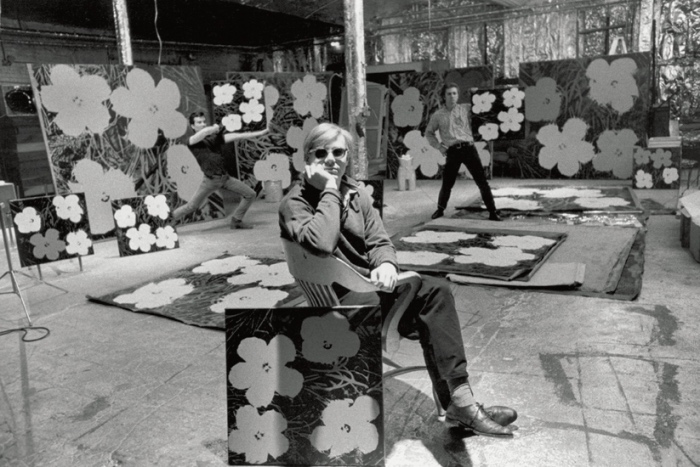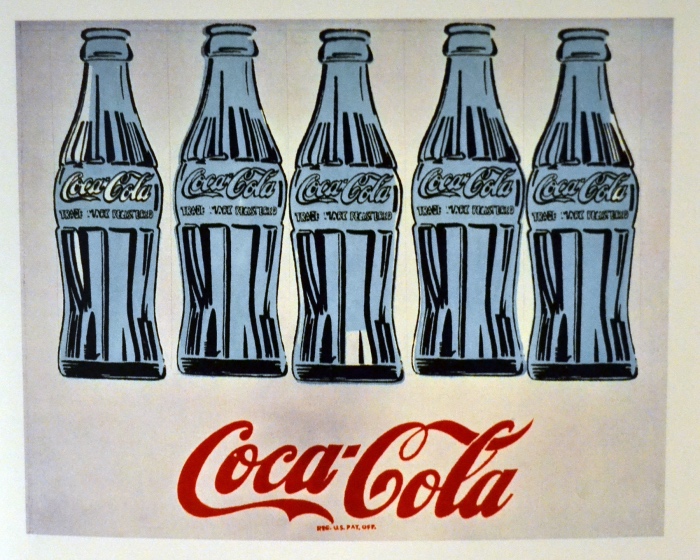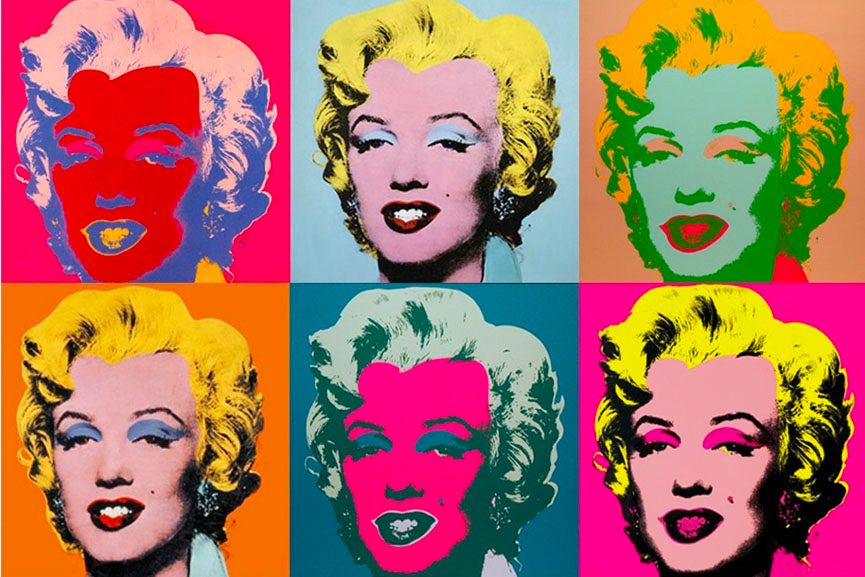
Andy Warhol all’interno della Factory
ANDY WARHOL FROM ADVERTISING TO POP ART
Andrew Warhola, known as Andy Warhol, was born in 1928 in Pittsburgh, and was the greatest innovator of art in the 20th century from advertising to Pop Art
The insight that made him famous was borrowed from the language of advertising.
He repeats an image over and over so that it enters the public’s mind forever, turning simple everyday objects or a famous person into a work of art.
Andy Warhol from Advertising to Pop Art

Andy Warhol – Cinque Bottiglie di Coca Cola – 1962
“Working for a lot of money can ruin your concept of yourself. When I was designing shoes for magazines I would get a certain amount for each shoe, so I would count the shoes to calculate how much I would earn. My standard of living depended on the number of shoes I designed – by counting them I knew how much money I could have” – Andy Warhol
Thus, in his bookThe Philosophy of Andy Warhol: from A to B and Back Again , the artist recalls his first successful experiences in the world of advertising graphics, in which he made his way and became a successful artist at a very young age.
We know almost everything about Andy Warhol’s life and work, but how did his work come about?
It was advertising that inspired him!
THE 1950S: THE DEBUT AND ADVERTISING ART
The 1950s were Warhol’s real debut on the New York scene.
After graduating from the Carnegie Institute in Pittsburgh, young Andy left his hometown to move to the Big Apple, the ideal city to turn his ambitions into reality.
During these years, he had no free time for fun and leisure (he would make up for this in the following decade, when he would reach the peak of his success), as he devoted himself completely to his work, executing illustrations for important magazines (such as Harper’s Bazar, the New Yorker, Glamour and Vogue) and working as an advertising designer.
It was precisely the world of advertising that enlightened Warhol, making him aware of the revolution he could have triggered precisely through that fascinating means of communication, increasingly present in people’s daily lives.
It was thus that the most beautiful works of Pop Art were born.

THE POWER OF THE IMAGE
Warhol begins to exploit the power that objects arouse in post-war society, in which everyone wants what they do not really need but only because of the power of the message they have been able to evoke in a given historical context.
Thus the Campbell’s Soup can is elevated from a simple mass product to a powerful symbol representing the American people in its entirety, and the image of Marilyn Monroe becomes a veritable popular icon to be worshipped, on a par with a religious symbol.
“Warhol,” as Achille Bonito Oliva has stated, “is the Raphael of American mass society who gives surface to every depth of the image, thus making it immediately usable, ready for consumption like any product that crowds our daily lives. In this way he develops an unprecedented classicism in his aesthetic transformation. Thus the publicity of the form creates the epiphany, i.e. the appearance, of the image’.
The intuition that made Warhol famous is that of repeating an image over and over again, so that it enters the public’s mind forever.
Thirty Are Better Than One, his first Mona Lisa repeated no less than thirty times, is transformed from a famous and exclusive work of art into a work of all and for all, turning the language of advertising into art.
In Green Coca-Cola Bottles we immediately understand that for the artist it is quantity that prevails over the originality of the subject depicted: it is in fact by repeating the same image that he manages to bring and stage the consumerist panorama in the world of art: the artist’s task is no longer to create, but to reproduce.
To do this, Warhol adopts a special serialisation technique, with the help of a silk-screen printing machine, which facilitates the realisation of the works and reduces production time. On large canvases he reproduced the same image many times, altering its colours: using advertising images of large commercial brands or striking images such as traffic accidents or electric chairs, he succeeded in emptying them of their original meaning.
Art must be ‘consumed’ like any other product.

